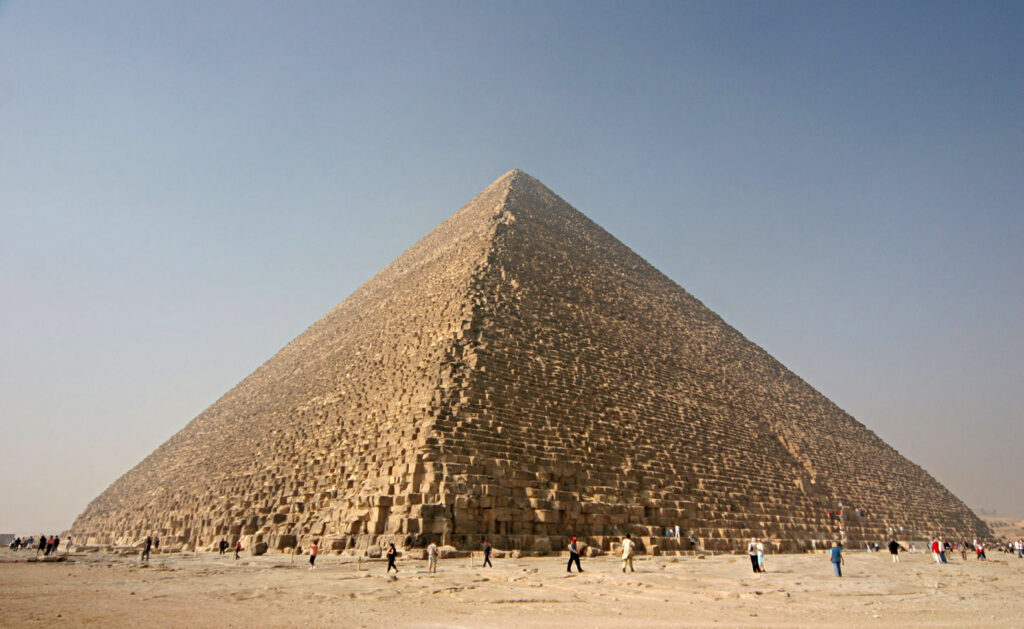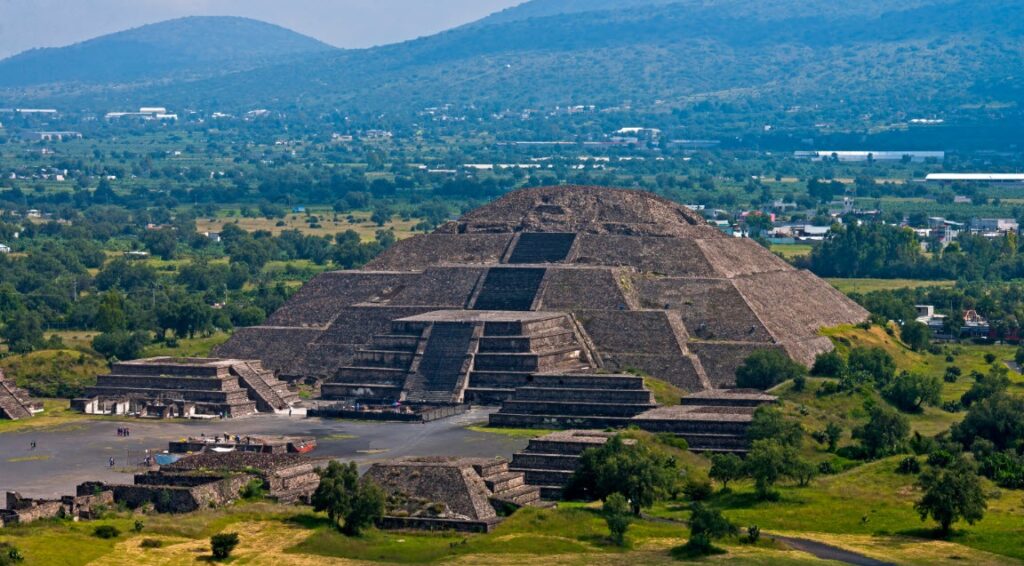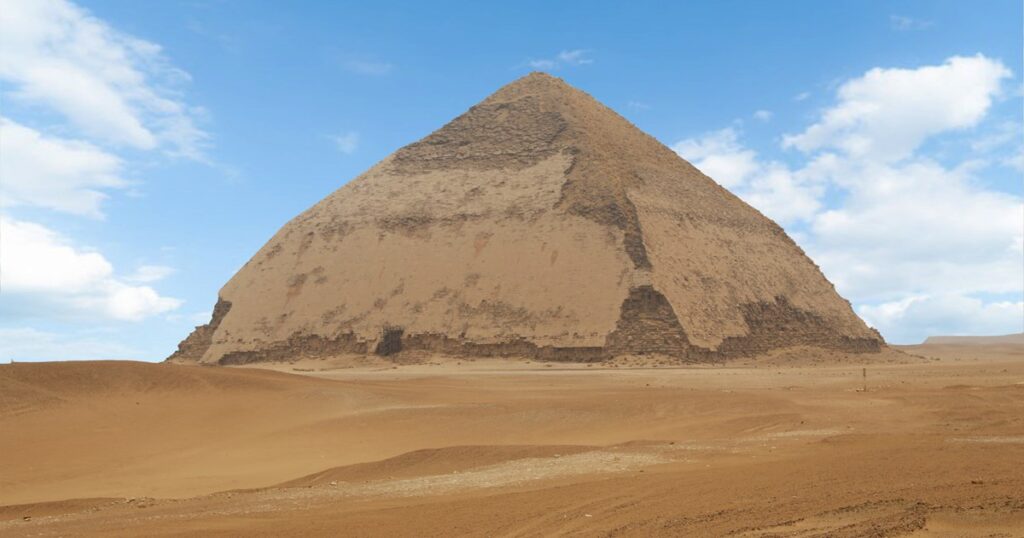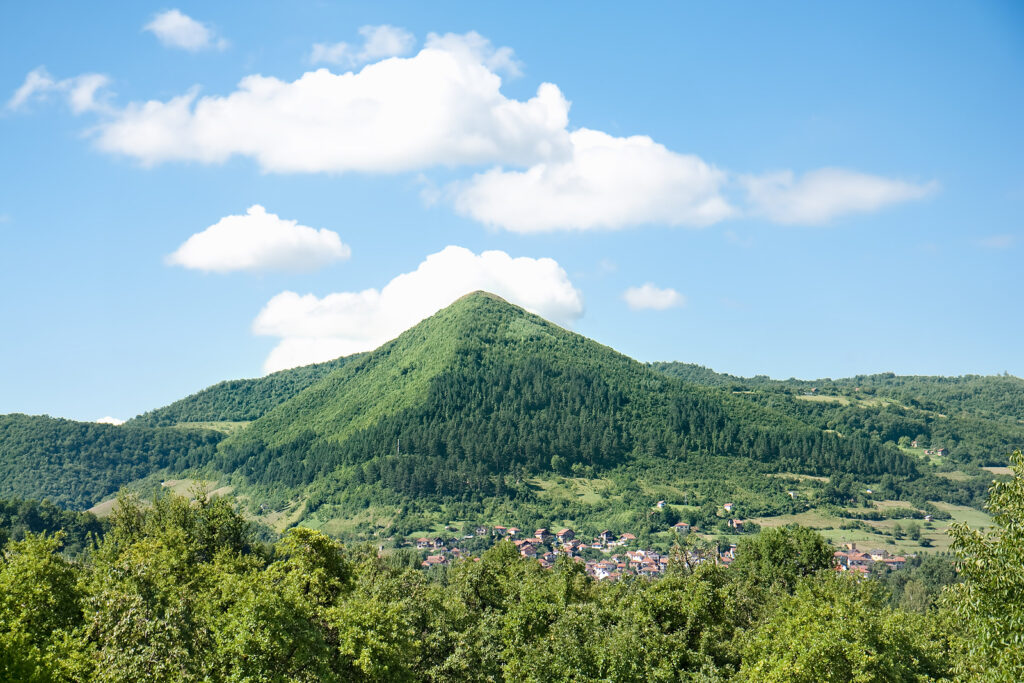Some travelers are shocked to discover that mysterious pyramids don’t only exist in Egypt, but also in other parts of the world.
Many of these pyramids, found everywhere from Egypt to Mexico to Rome, share historical mysteries.
The enigmatic intricacies of these places’ histories contribute to their attractiveness even though many questions have not yet been resolved.
What then are some of the most mystifying pyramids in the world? Let’s take a look at the top 10!
Once you’re done reading this, you can check out the top 10 mysterious places in the world.
10 Mysterious Pyramids in the World
- The Great Pyramid of Giza, Egypt
- Pyramid of the Sun, Teotihuacan, Mexico
- Pyramid of Djoser, Egypt
- Nubian Pyramids, Sudan
- Cholula Pyramid, Mexico
- Bent Pyramid, Egypt
- Pyramid of Cestius, Rome
- Mayan Pyramids of Tikal, Guatemala
- The Red Pyramid, Egypt
- The Bosnian Pyramid, Bosnia
1. The Great Pyramid of Giza, Egypt

One of the Seven Wonders of the Ancient World, the Great Pyramid of Giza is the largest of the three pyramids on the Giza plateau.
It was constructed for the pharaoh Khufu and held the record for the tallest man-made construction for over 3800 years.
Engineers and archaeologists find it difficult to understand how this structure was built in the first place!
To date, the mystery of how the large limestone blocks were moved by the Egyptians remains unanswered.
Learn more about the Great Pyramid of Giza right here.
2. Pyramid of the Sun, Teotihuacan, Mexico

You can find the Pyramid of the Sun in an ancient city known as ‘Teotihuacan’ about 30 miles northeast of present-day Mexico City.
Archaeologists believe the 216-foot-tall pyramid was constructed to coincide with particular astrological phenomena.
However, little is known about its builders, and the civilization that erected this impressive monument perished without a trace.
Read more about the Pyramid of the Sun in this article.
3. Pyramid of Djoser, Egypt

Imhotep, the architect of Djoser, constructed the Pyramid of Djoser, often called the ‘Step Pyramid’.
This pyramid was not only the first significant cut-stone building, but it was also the earliest monumental stone structure.
Imhotep’s use of smaller stone stones as building blocks laid the groundwork for later pyramid construction.
Find out more about the Pyramid of Djoser in this article.
4. Nubian Pyramids, Sudan

The Nubian Pyramids are remains of the historic Kushite kingdoms. They may be smaller than their Egyptian counterparts but are still spectacular.
These pyramids acted as tombs for the monarchs and their families between 2600 and 300 B.C.
This area is a less-traveled marvel of ancient architecture because it has more than Egypt’s 255 pyramids.
Check out this Wikipedia page on Nubian Pyramids to learn more.
5. Cholula Pyramid, Mexico

The Great Pyramid of Cholula, also known as Tlachihualtepetl (Nahuatl for “made-by-hand mountain”), is the world record holder for the largest pyramid in the world by volume.
The pyramid is mostly unexcavated and covered with vegetation, giving it the appearance of a natural hill.
With a total capacity of approximately 4.45 million cubic meters, it is 180 feet tall, 1,480 feet broad at the base, and weighs over a million tonnes.
Learn more about the Cholula Pyramid here.
6. Bent Pyramid, Egypt

Another fascinating pyramid constructed by the Old Kingdom pharaoh Sneferu is the Bent Pyramid.
This pyramid received this name because of its distinctive bent shape. It’s a cross between step-sided and smooth-sided pyramids.
Its original polished limestone exterior casing is still entirely there, offering priceless information on the construction techniques used to build pyramids.
Gather more knowledge on the Bent Pyramid here.
7. Pyramid of Cestius, Rome

The Protestant Cemetery and Porta San Paolo are close to Rome’s historic pyramid known as the Pyramid of Cestius.
Unlike other pyramids, the purpose of the Pyramid of Cestius was to act as a monument rather than a burial.
Its construction took place between 18 and 12 B.C. and illustrates the influence Egyptian culture had on Roman society.
You can learn more about the Pyramid of Cestius here.
8. Mayan Pyramids of Tikal, Guatemala

One of the most remarkable Mayan monuments is the pyramid structure at Tikal.
These pyramids in Guatemala’s jungle display advanced astronomical, mathematical, and architectural understanding.
They display the work of an advanced civilization that used advanced techniques to construct this pyramid.
Between 200 and 900 A.D., Tikal experienced great prosperity, and you can read more about the Mayan Pyramids here.
9. The Red Pyramid, Egypt

The Red Pyramid, often referred to as the North Pyramid, is the third-largest pyramid in Egypt.
It remained the largest in the world till the construction of the Great Pyramid of Giza. The credit for the construction of the Red Pyramid goes to Pharaoh Sneferu.
The Red Pyramid got its name from the reddish limestone that was utilized in its construction. It represents the maturation of the real smooth-sided pyramid.
You can learn more about the Red Pyramid here.
10. The Bosnian Pyramid, Bosnia

Some may consider the Bosnian Pyramid a surprise addition, but it continues to spark intense debates among archaeologists worldwide.
There is continuous debate about the origins of this allegedly oldest and tallest pyramid.
Some claim it is a naturally occurring hill, while others think it is an ancient man-made edifice.
It seems the truth lies beneath the surface! You can check out this article on the mystery of Bosnia’s ancient pyramids to learn more about it.
Conclusion: Top 10 Mysterious Pyramids
That concludes our list of the top 10 mysterious pyramids! If you enjoyed reading this, you should check out this article on Angel Number 444 and its power!
Through these pyramids, we realize how little we understand about our history and these fascinating buildings.
These pyramids pique our interest, enliven our imagination, and nudge us in the direction of a more thorough comprehension of our past.
As we solve their mysteries, we also piece together a portion of human history, which helps us understand the nature of the human race.







